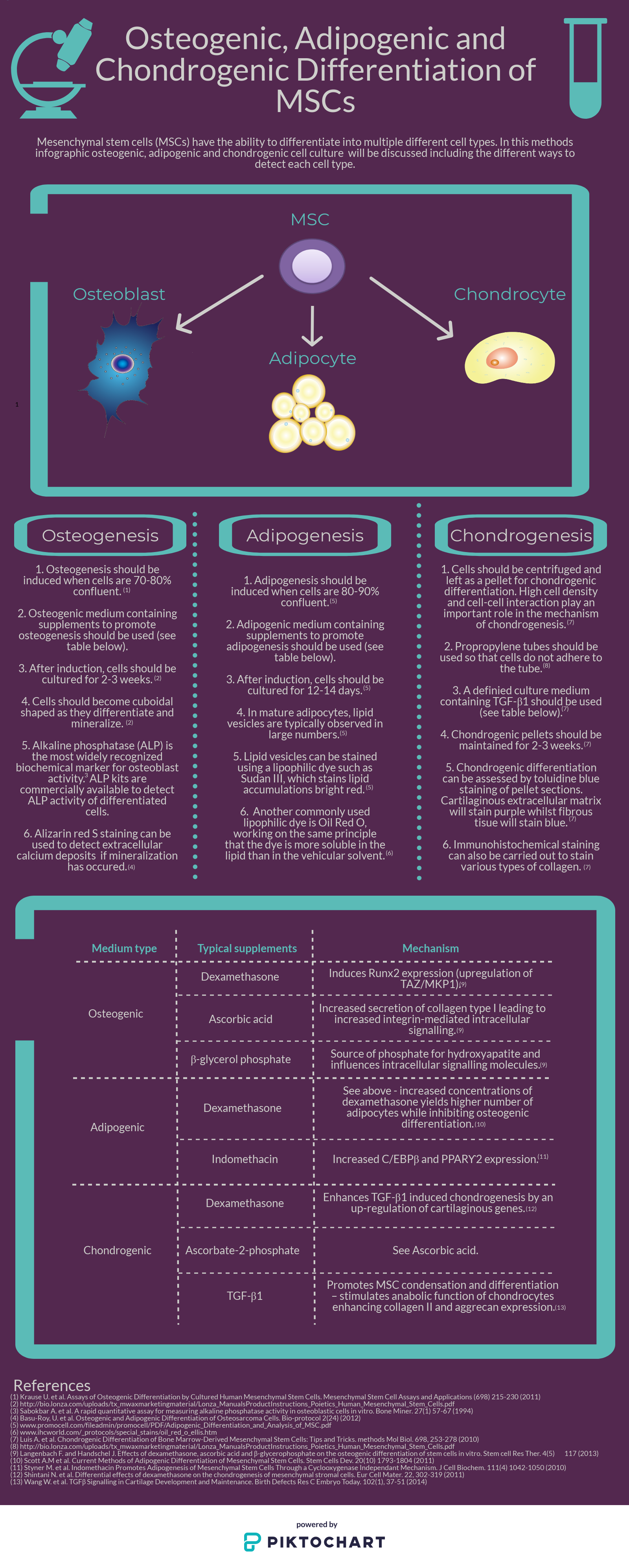Osteogenic, adipogenic and chondrogenic differentiation of MSCs
In this infographic, Alice Philipson (University of Leeds, UK) provides an overview of different pathways of differentiation for MSCs.
Mesenchymal stem cells (MSCs) have the ability to differentiate into multiple different cell types. In this infographic, Alice Philipson discusses osteogenic, adipogenic and chondrogenic cell culture including the different ways to detect each cell type. Find out more about Alice’s research in this episode of TalkingRegMed.

Find out more about MSCs in our latest spotlight